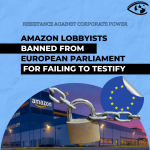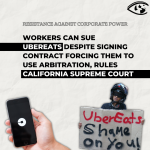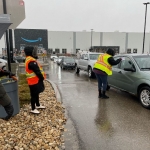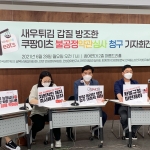Frequent Toxic Miles
The Wall Street Journal has an interesting article today about how toxics in the United States that are dumped in other countries may come back to haunt U.S. consumers. Toxics have been found in jewelry ranging from "Best Friends Forever" necklaces sold at a chainstore called Claire's Stores Inc. to necklace and earring sets with plastic "birthstones" sold by Kmart, another major retail chain.
Many of these products are made in China - which is probably the leading exporter to the U.S. But not many know that the reason for this is that the country also is a major importer of U.S. electronic waste, despite the fact that the country's laws essentially ban imports of such waste.
Reporter Gordon Fairclough writes: "For lead, the trip to China from the U.S. typically goes something like this: U.S. consumers and businesses send their old electronics to recycling firms -- often by way of innocuous recycling drives. Some of those firms then sell the electronics to dealers in the U.S., who sell them to dealers in China. Chinese companies buy the e-waste and strip lead and other re-sellable materials from it -- often discarding harmful materials along the way, adding to local pollution. The lead makes its way -- sometimes at toxic levels -- into trinkets sold to consumers in the U.S."
The article is based on studies by Jeffrey Weidenhamer and Michael Clement, chemists at Ashland University in Ohio, who examined the composition of children's highly leaded jewelry and key chains and determined that some also contained levels of copper and tin that suggested the source was lead solder used in electronic circuit boards. Other jewelry samples were also found to contain antimony, a toxic metalloid element used to harden lead used in batteries.
Our friends at Silicon Valley Toxics Coalition have a great animated film showing how this works. (Full disclosure here: Aditi Vaidya, SVTC program director, is on CorpWatch's advisory board) The video was created by Ben Goldhirsch's Good magazine.
Two other good films can be obtained from the Basel Action Network, which has a film on e-waste in Asia as well as one on similar schemes to dump e-waste in Africa.
Says Jim Puckett, coordinator of BAN. "In a globalized world, pollution knows no borders so the US government's policy of allowing a free trade in hazardous waste has come back to haunt and hurt us."
None of this should be legal. Under the Basel convention, as of 1 January 1998, all forms of hazardous waste exports from the 29 wealthiest most industrialized countries of the Organization of Economic Cooperation and Development (OECD) to all non-OECD countries. Unfortunately although China has ratified the treaty, the United States has not, so the trade continues.
For U.S. consumers, SVTC has guides about less harmful ways to dispose of electronic waste and how to buy electronics more responsibly.
The European Union is way ahead of the U.S. here - it requires companies to cover the costs of recovery and recycling under the Waste Electrical and Electronic Equipment (WEEE) Directive. Last week, Britain become the latest country to enforce that law. For another fun way to learn about this issue, check out the WEEE man: a huge robotic figure made of scrap electrical and electronic equipment. It weighs 3.3 tonnes and stands seven meters tall - representing the average amount of e-products every single British citizen throws away over a lifetime.
- 189 Retail & Mega-Stores



